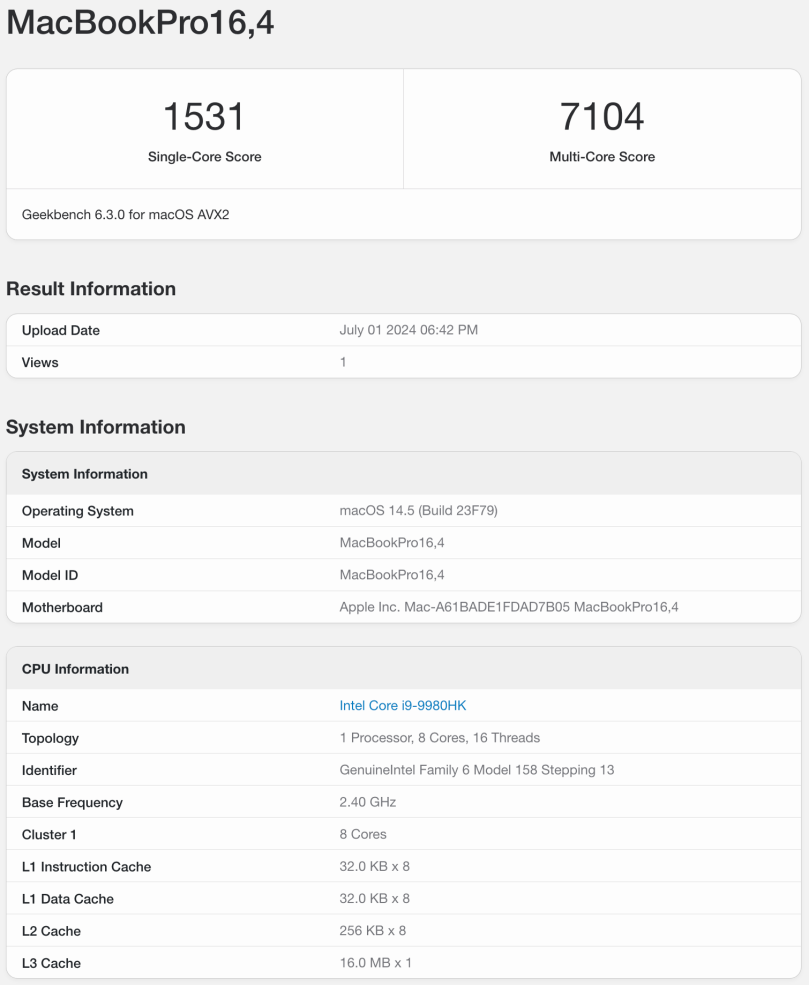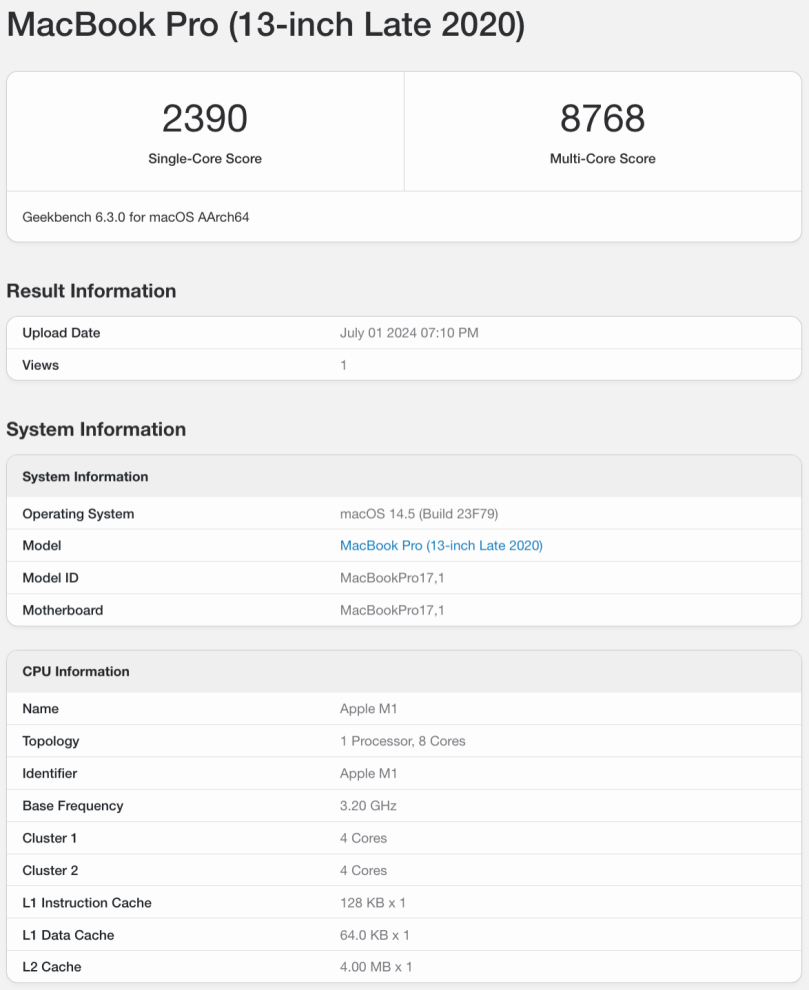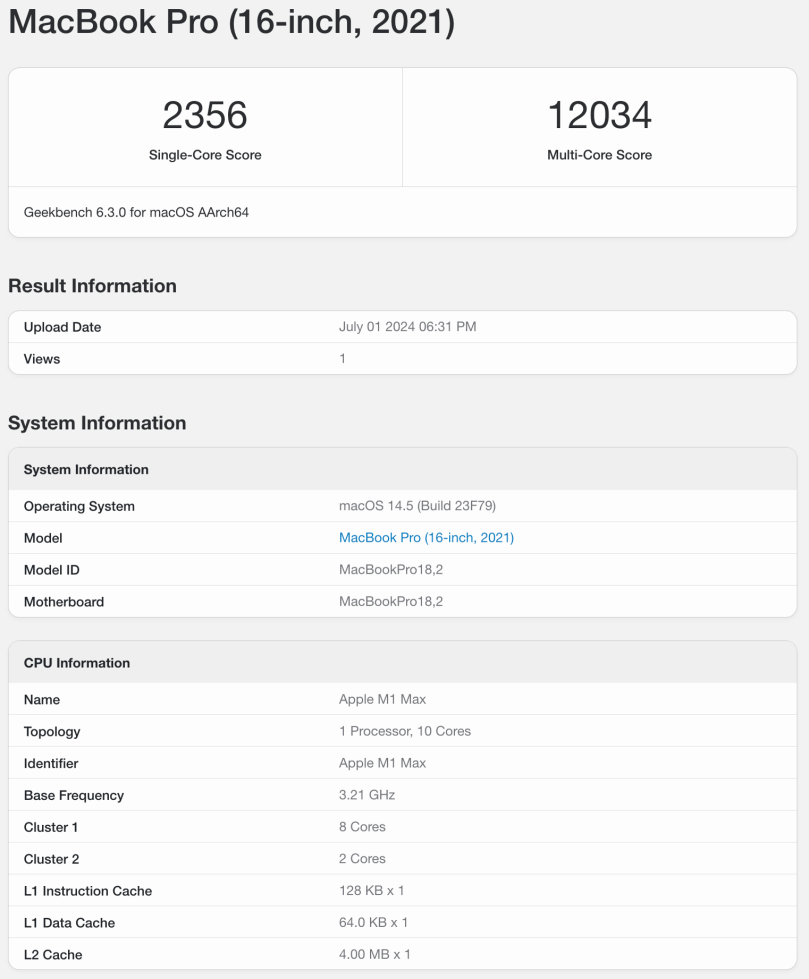All three benchmarks were performed on the same macOS release, Sonoma 14.5. The same application was used for all three benchmarks, Geekbench 6.3.0. The only benchmark that was performed was CPU.

This is the Beast I wrote about in the prior post. This was purchased and delivered in 2020. This is Apple’s final Intel MacBook Pro, and it was delivered with Intel’s highest CPU offering, the Core i9-9980HK with 8 hyper-threaded cores. The machine as delivered had 64 GiB of memory and 4 TiB of SSD storage.

I purchased this Christmas 2021. It was cheaper to purchase this model than an Apple Silicon iPad Pro 13″ with Apple’s Keyboard. A lot cheaper. In spite of its cheapness it’s still faster than the Beast. This is the machine I carry with me when I need to work out in the field, in part because if its performance, and in part because it can put in a solid 8 hour day without having to be tethered to a charger. Battery life with Apple Silicon is phenomenal.

And now this machine. Purchased Christmas 2023. It has half the memory of the Beast, 32 GiB instead of the Beast’s 64 GiB, and only 1/4 the SSD storage at 1 TiB. But it runs rings around the Beast, especially multi-core, and not just in an artificial benchmark. What’s interesting is that the second Apple Silicon MacBook Pro’s single core performance doesn’t exceed that of the first, and that is to be expected if a little surprising. Both machines are running with M1 cores, and Apple promised not to cripple Apple Silicon based on what computer it was put in. Instead Apple differentiates with the number and types of cores in each computer. The 13″ has 4 power + 4 efficiency while the 16.2″ has 8 power + 2 efficiency cores, which explains why the 16.2″ multi-core score is half again higher than the 13″ multi-core score. You’ll note that both machines have the same amount of L1, L2, and L3 cache, so there’s no crippling there. Base CPU frequency is 3.2 GHz, so there’s no crippling there either. Both Apple Silicon machines wipe the floor with the Beast, and the Beast is no slouch.
It also underscores that in 2020 Apple was able to completely trounce Intel’s commercial CPU offerings with its first generation M1 Apple Silicon. Again by a wide margin. I don’t believe that Intel has caught up, let along surpassed Apple in the last four years, and I don’t believe Intel ever will.

You must be logged in to post a comment.